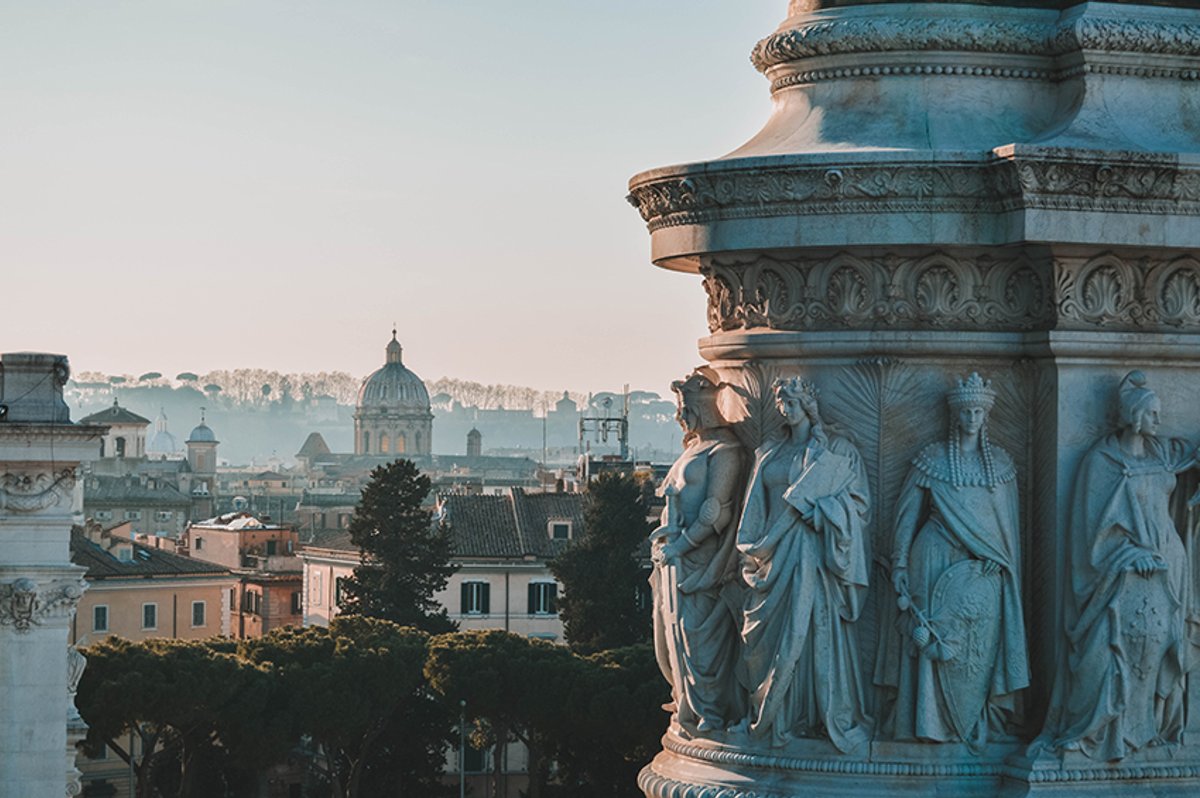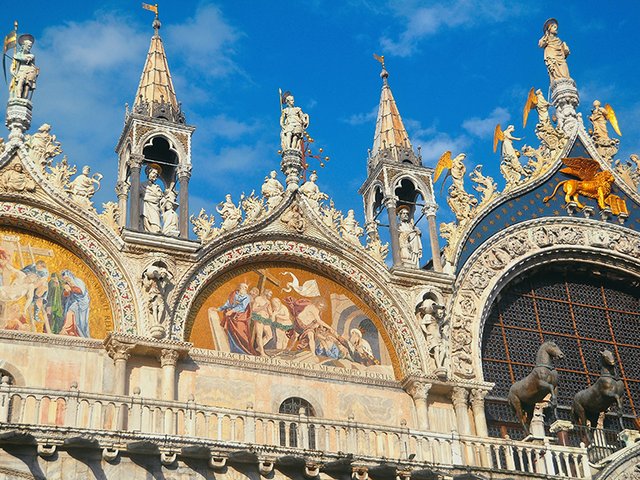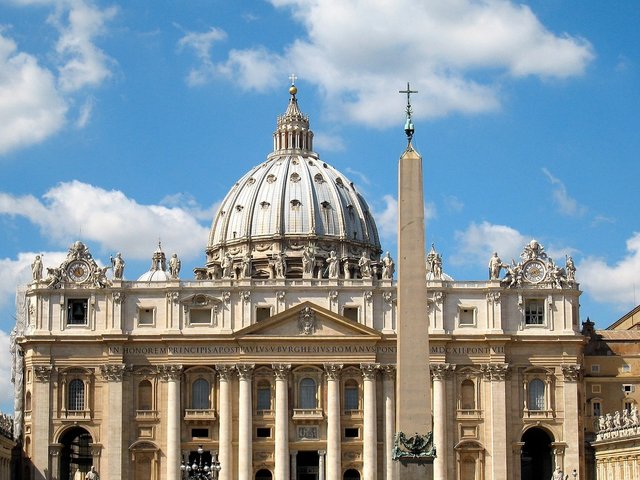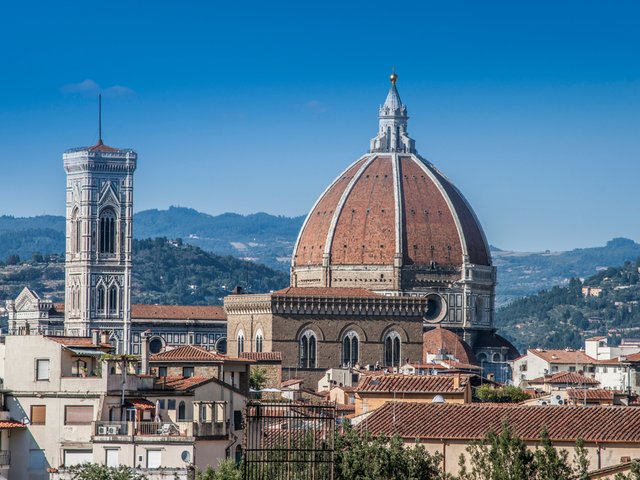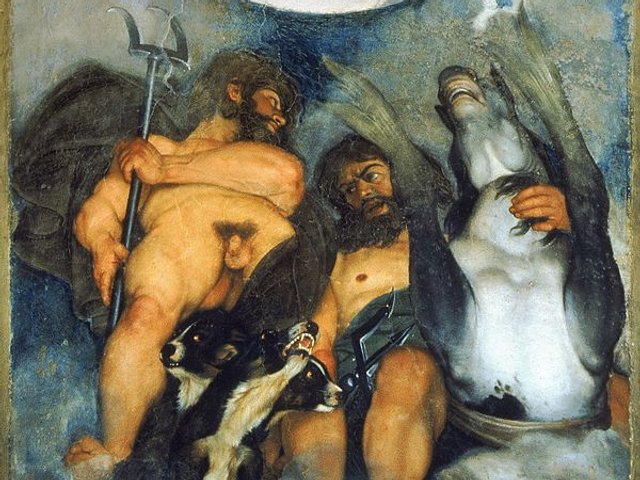Roman emperors called it “Caput Mundi" (centre of the world). Popes and Renaissance-era bankers erected lavish villas on its most exclusive streets. For much of its 3,000-year history, Rome has been home to some of the Western world's biggest superpowers. The astonishing cultural heritage they have left behind now fills the city's churches, galleries and piazzas. Some may prefer to stroll through the ancient ruins, elegant boulevards and lush gardens, soaking up the atmosphere and beauty. Others might want to home in on the finest artistic treasures the city has to offer. Either way, our guide will help you decide where to start. Works displayed within the Vatican City have not been included in the following list (there is enough on show there for a separate article).
Diego Velázquez’s portrait of Pope Innocent X (1650), La Galleria Doria Pamphilj, via del Corso
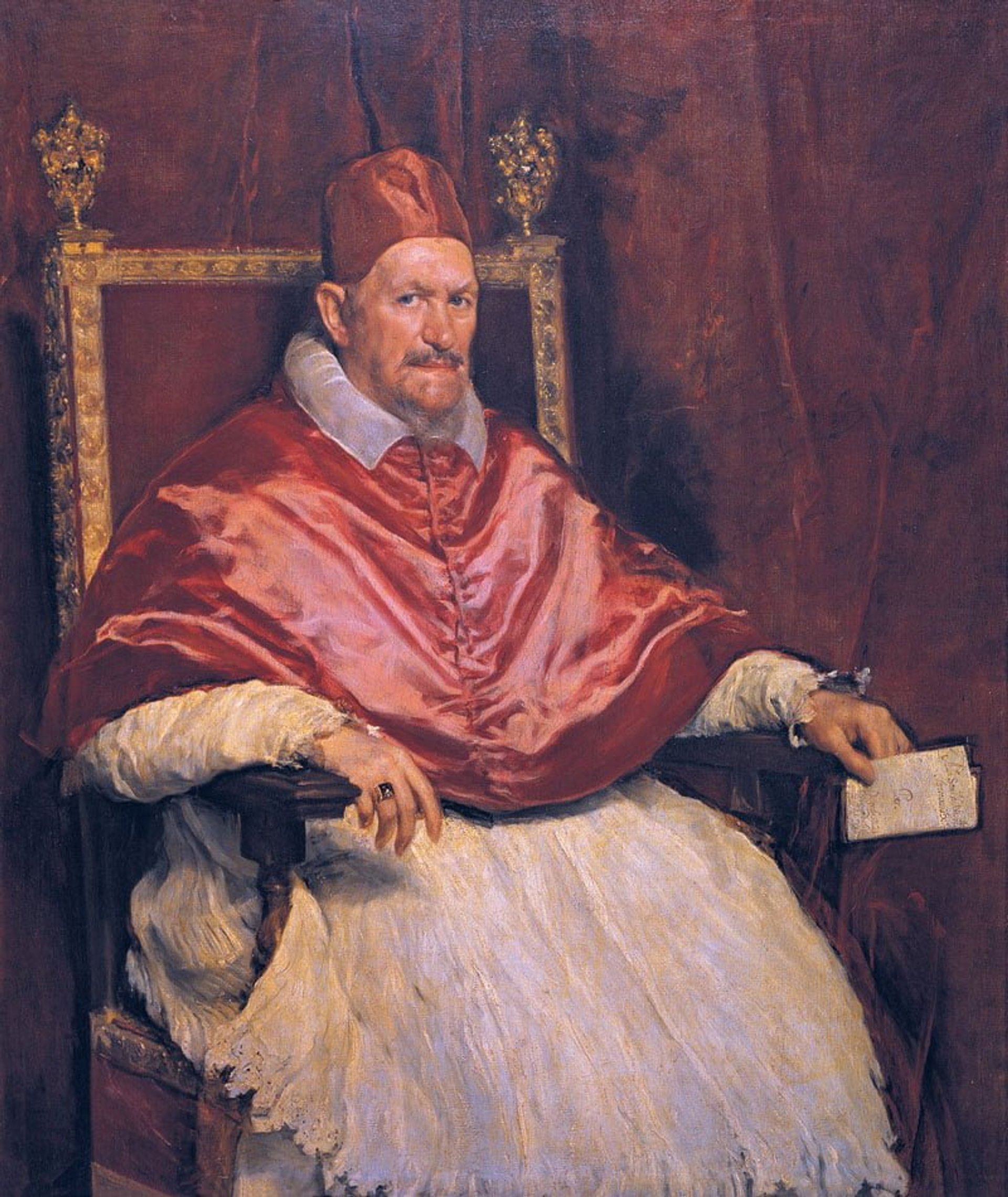
Diego Velázquez, Portrait of Innocent X (around 1650) © Galleria Pamphilj
Fixing the viewer, Pope Innocent X's piercing eyes express intelligence, guile and unnerving authority. Diego Velázquez’s famous portrait, which inspired Francis Bacon’s screaming popes, is regarded by many experts as the finest in history. The work is displayed in the Galleria Doria Pamphilj, the privately owned palazzo that was built by Giambattista Pamphili (the pope in the portrait), and is still owned by the family. Paintings by Caravaggio, Titian, Raphael, Guercino and Carracci also line the building’s gilded walls.
Ceiling paintings by Caravaggio and Guercino, Casino dell’Aurora, Via Aurora
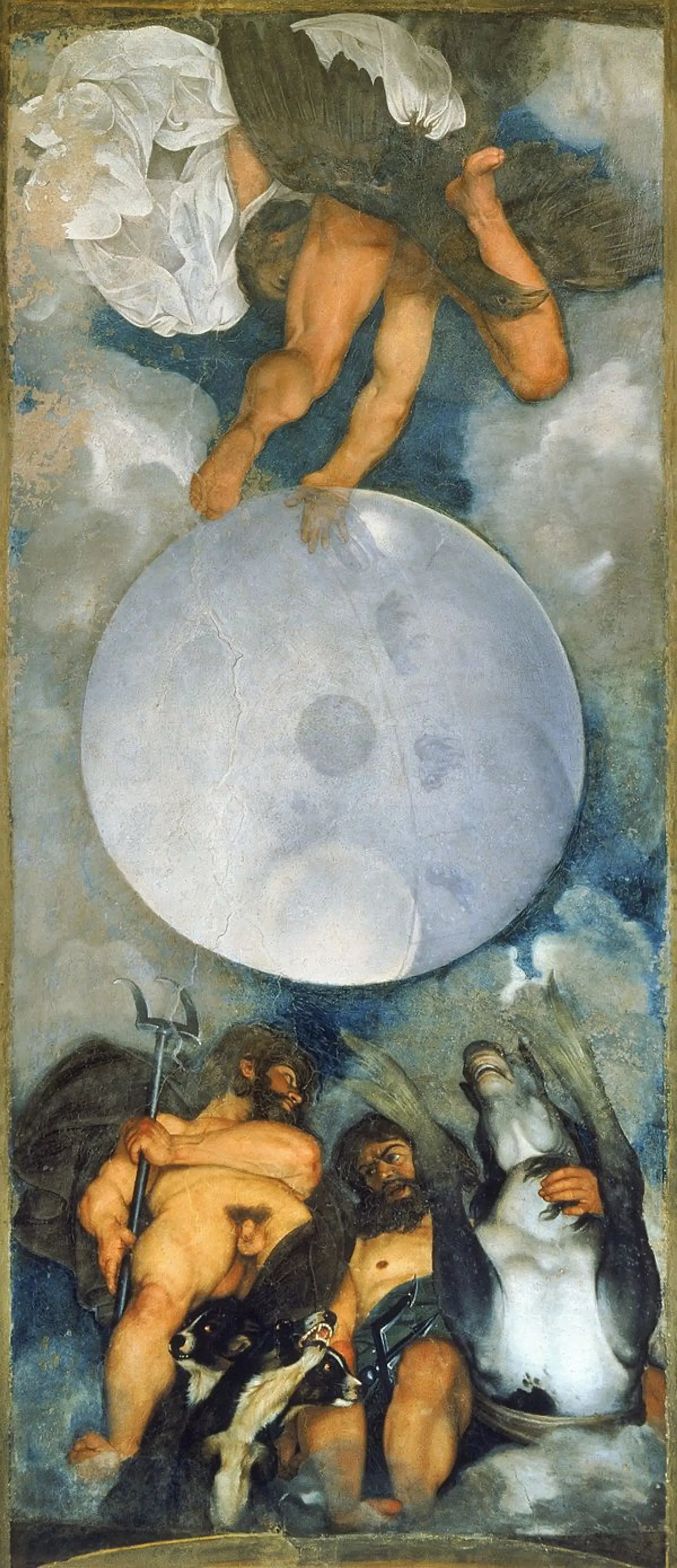
Caravaggio's Jupiter, Neptune and Pluto (around 1597)
The Villa Ludovisi (aka the Casino dell’Aurora) made headlines this year when the 2,200 sq. m palazzo near the Porta Pinciana went on sale for an estimated end price of nearly half a billion euros. Much of the media hype swirled around Caravaggio’s masterly oil painting on a ceiling, which shows gods mounted on mythological creatures encircling a gleaming giant celestial sphere. But the villa takes its name from Guercino’s fresco of Aurora, the Roman goddess of dawn who is shown gliding over colonnades in a horse drawn carriage. Owned by the Boncompagni Ludovisi family, a buyer for the villa is still to be found.
Contact the villa’s staff to request book visits in advance.
Tomb of Pope Julius II (1545), the church of San Pietro in Vincoli, Monti district
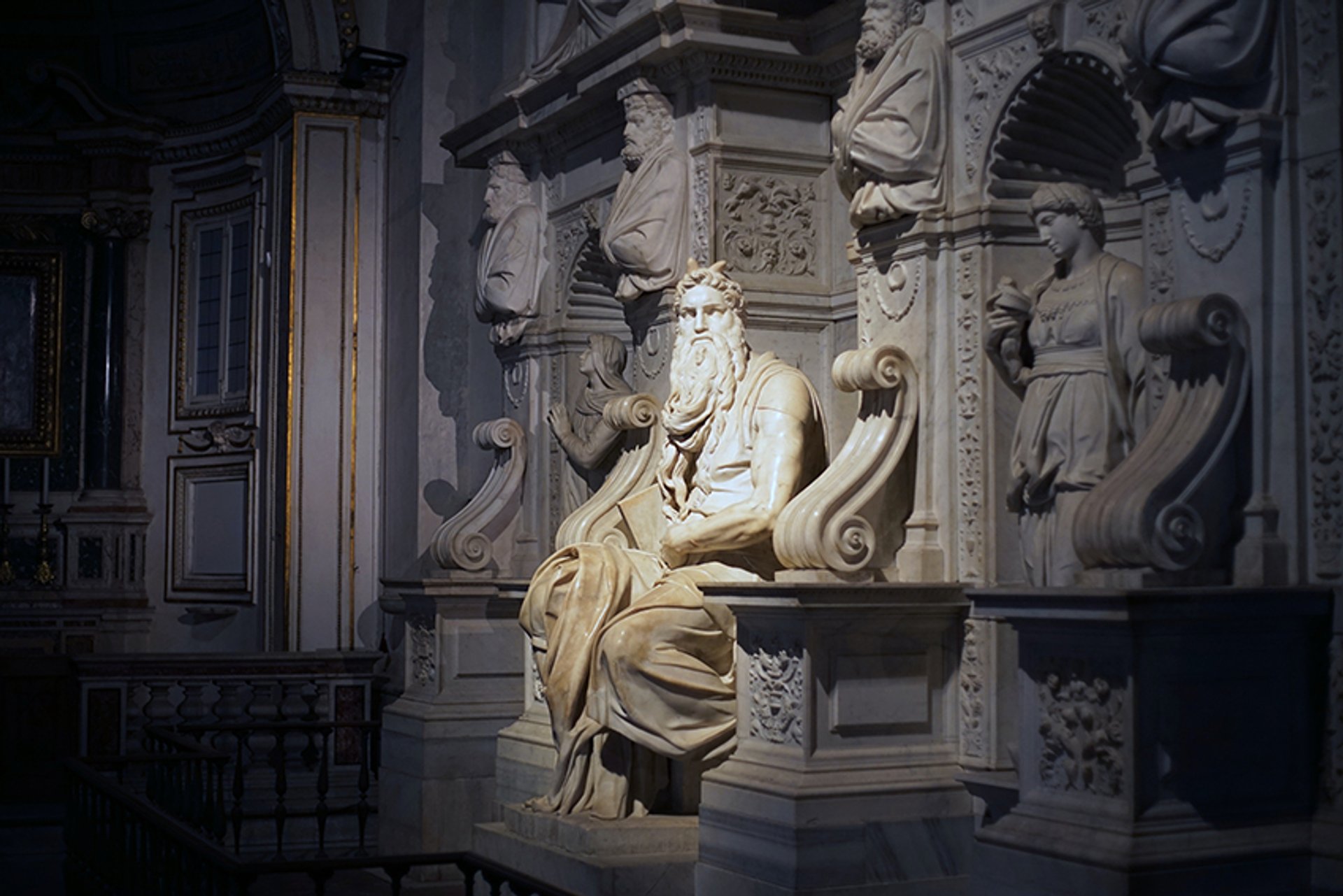
Michelangelo's Moses, Basilica di San Pietro in Vincoli © Fr. Barry Braum
Michelangelo's original design for Pope Julius II's colossal tomb, initially intended for Saint Peter’s Basilica, was meant to include 47 life-size figures. In the end, the artist created a less ambitious version of the monument for the church of San Pietro in Vincoli in the heart of the buzzy Monti district. The structure is dominated by a life-size, horned Moses, taken from Michelangelo's original design. The statue is thought to represent the moment the prophet discovered the Hebrew people worshipping false idols. His left leg cocked as if about to propel the figure forwards, Moses's body ripples with barely concealed rage.
Ara Pacis(9BC), near Piazza del Popolo
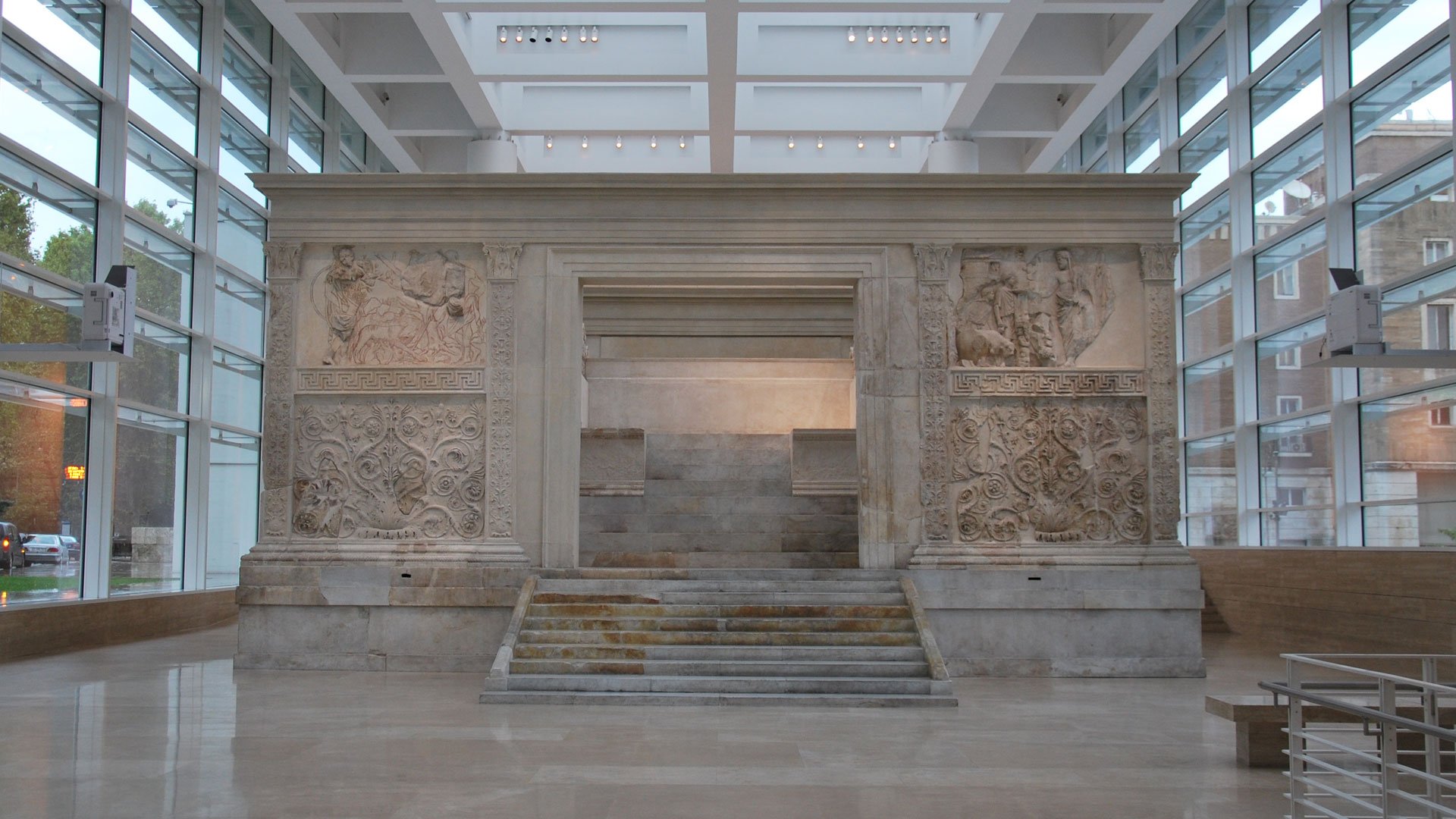
The Ara Pacis museum was designed by Richard Meier © Roma Capitale
The Roman Senate commissioned the altar to mark Augustus's victorious return in 13BC from a three-year campaign in Spain and Gaul. Dedicated to Pax, the goddess of Peace, it is one of the finest existing products of the emperor's Roman building spree (Augustus claimed he started out with a city made of bricks and transformed it into one of marble, according to legend). Mussolini built a pavilion in 1938 to contain and protect the ancient structure, which was replaced with the Richard Meier-designed Ara Pacis museum in 2006. Friezes and carvings adorning the marble altar and walls show priests, classical mythology, members of the emperor's household and sacrificial animals.
Raphael’s frescoes in the Villa Farnesina, Trastevere district
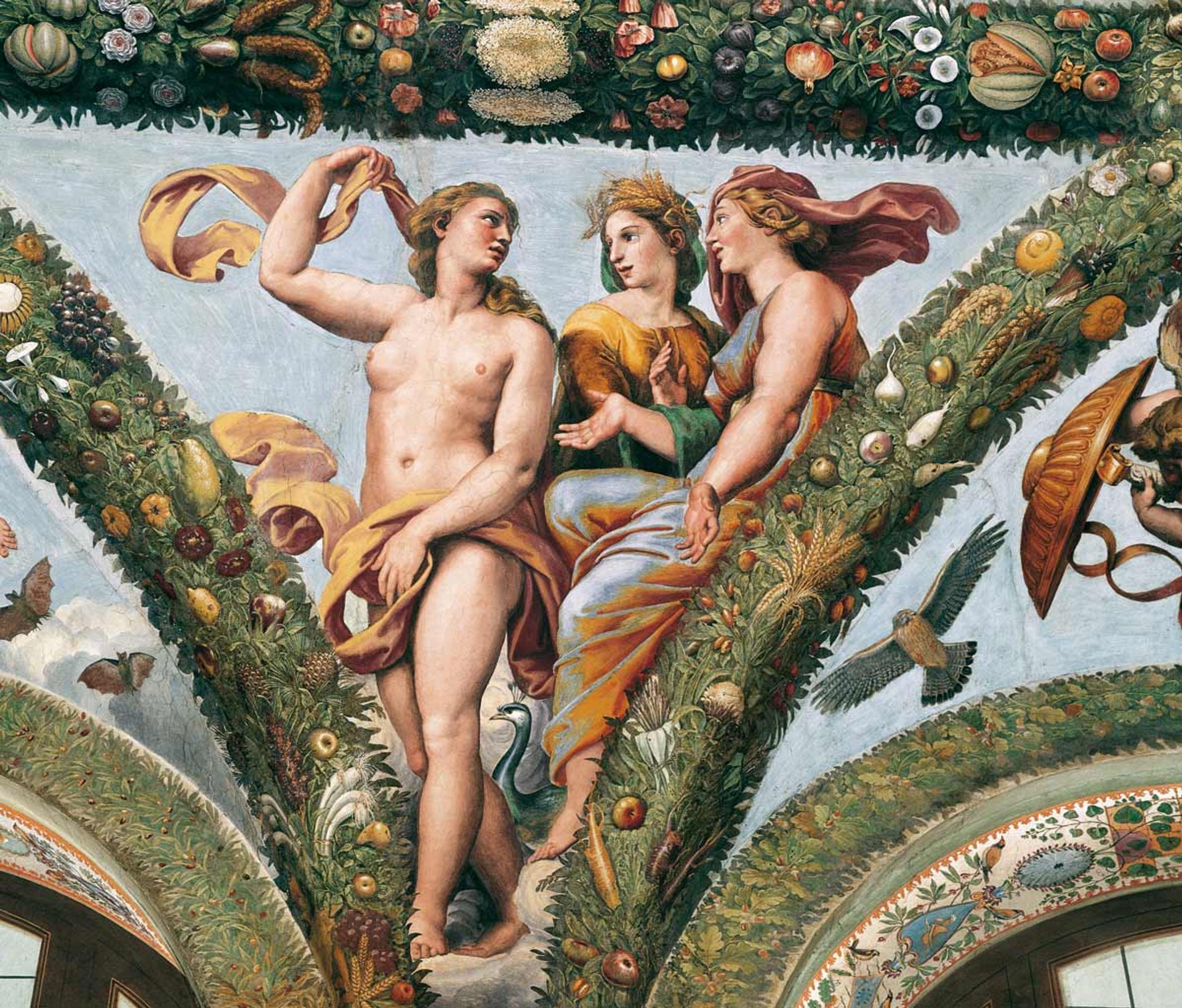
Detail of Raphael's ceiling frescoes in the Loggia Amore Piche (1518) © Archivio Villa Farnesina
Agostino Chigi, the immensely rich Sienese banker, threw lavish dinner parties attended by poets, princes, cardinals and popes at his Rome villa. For diners who sat in the Loggia di Amore e Psiche, Raphael's ceiling frescoes painted in 1518 provided a feast for the eye. Two central panels depicting a divine council and wedding banquet are framed by cherubs, richly-detailed festoons and scenes from the myth of Love and Psyche. The adjoining Loggia di Galatea takes its name from Raphael’s Triumph of Galatea (1512), in which the beautiful Nereid rides a shell-chariot drawn by dolphins, her sea nymphs pursued by muscular tritons. The villa also boasts frescoes by artists including Sebastiano del Piombo and Baldassarre Peruzzi.
Mosaics in the church of Santa Maria in Trastevere

Church of Santa Maria in Trastevere © Fred Bigio/Flickr
In Rome’s vibrant Trastevere district, winding, cobbled streets lead to airy piazzas. One of these elegant spots is dominated by the church of Santa Maria in Trastevere, which was originally built by Pope Callixtus I in 222AD and contains some of Rome’s most spectacular mosaics. In an upper 12th-century apse design, Christ and Mary are flanked by six saints and Pope Innocent II, who had re-erected the building in 1143, shown holding a model of the church. Below, Pietro Cavallini’s 13th-century mosaics depict scenes from the life of Virgin Mary. The work broke new ground for its subtle shades of light and near three-dimensional quality.
Roman art, Museo delle Civiltà, EUR district

Palazzo Civilta Italiana © Erin Doering
Mussolini began building the Rome Universal Exposition (EUR) to host the planned 1942 fair that was cancelled following the start of the Second World War. With its decorated obelisks, sweeping colonnades and monumental limestone and marble buildings, the complex’s imposing architecture is heavily inspired by Roman Imperial town planning. Visit the Museo della Civiltà Romana for art hailing from ancient Rome, such as a bust of Bruto Senior, as well as wooden models showing the urban layout of the imperial city.
Caravaggio’s Saint Matthew cycle, San Luigi dei Francesi
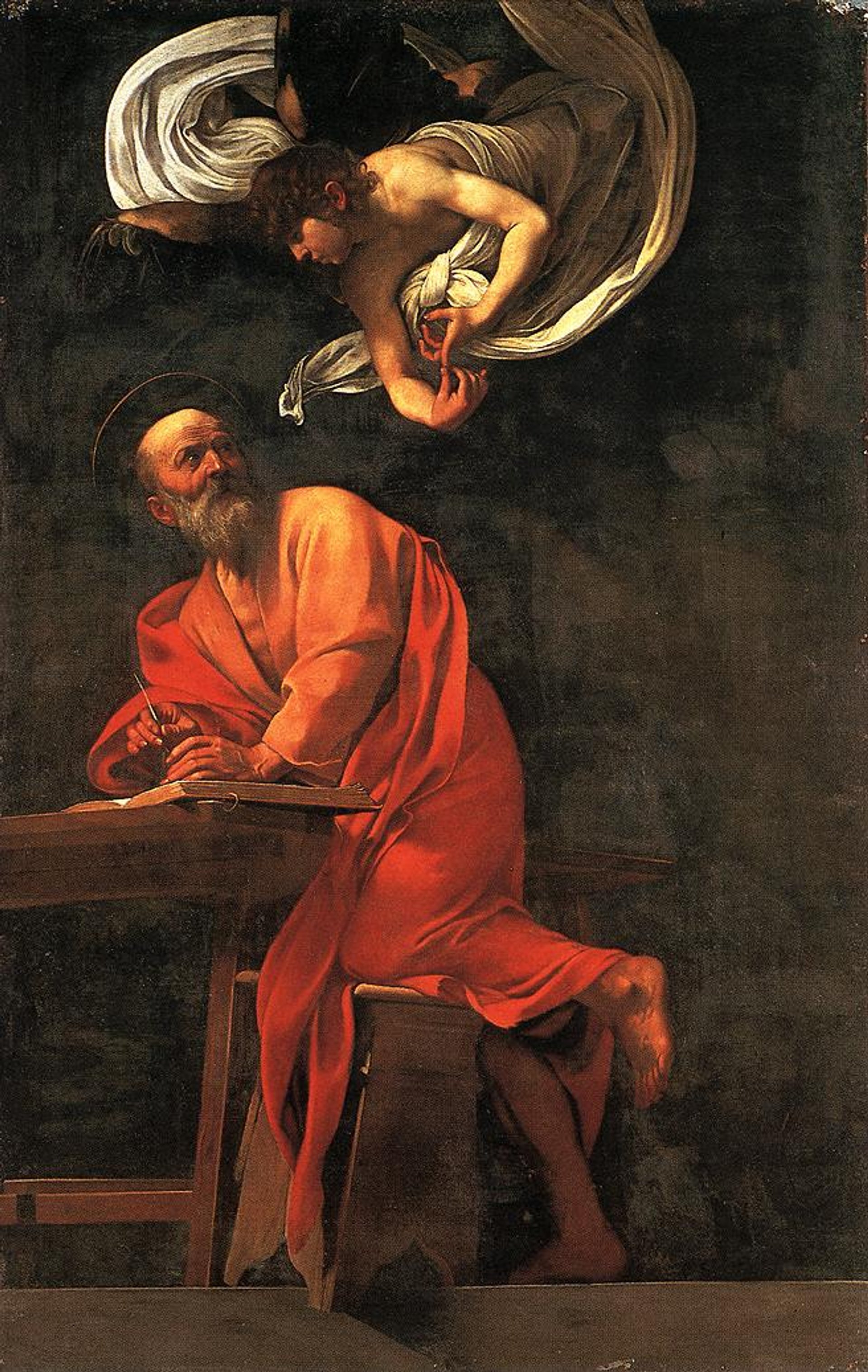
Caravaggio, The Inspiration of Saint Matthew (1602)
Caravaggio's paintings are displayed in a number of religious buildings around Rome, but the church of San Luigi dei Francesi is special because it contains three works by the artist. The trio's centrepiece in the Contarelli Chapel is the Inspiration of Saint Matthew (1602), a striking example of Caravaggio’s chiaroscuro style. (The painting replaced an earlier version that had been rejected by Cardinal Del Monte, because the figure’s exposed feet were deemed offensive, and was eventually destroyed in a fire during the Second World War.) The work is flanked by the mannerist-style Martyrdom of Saint Matthew (1600) and the more naturalistic Calling of St Matthew (1600).
Iena Cruz’s Hunting Pollution mural, Via del Porto Fluviale
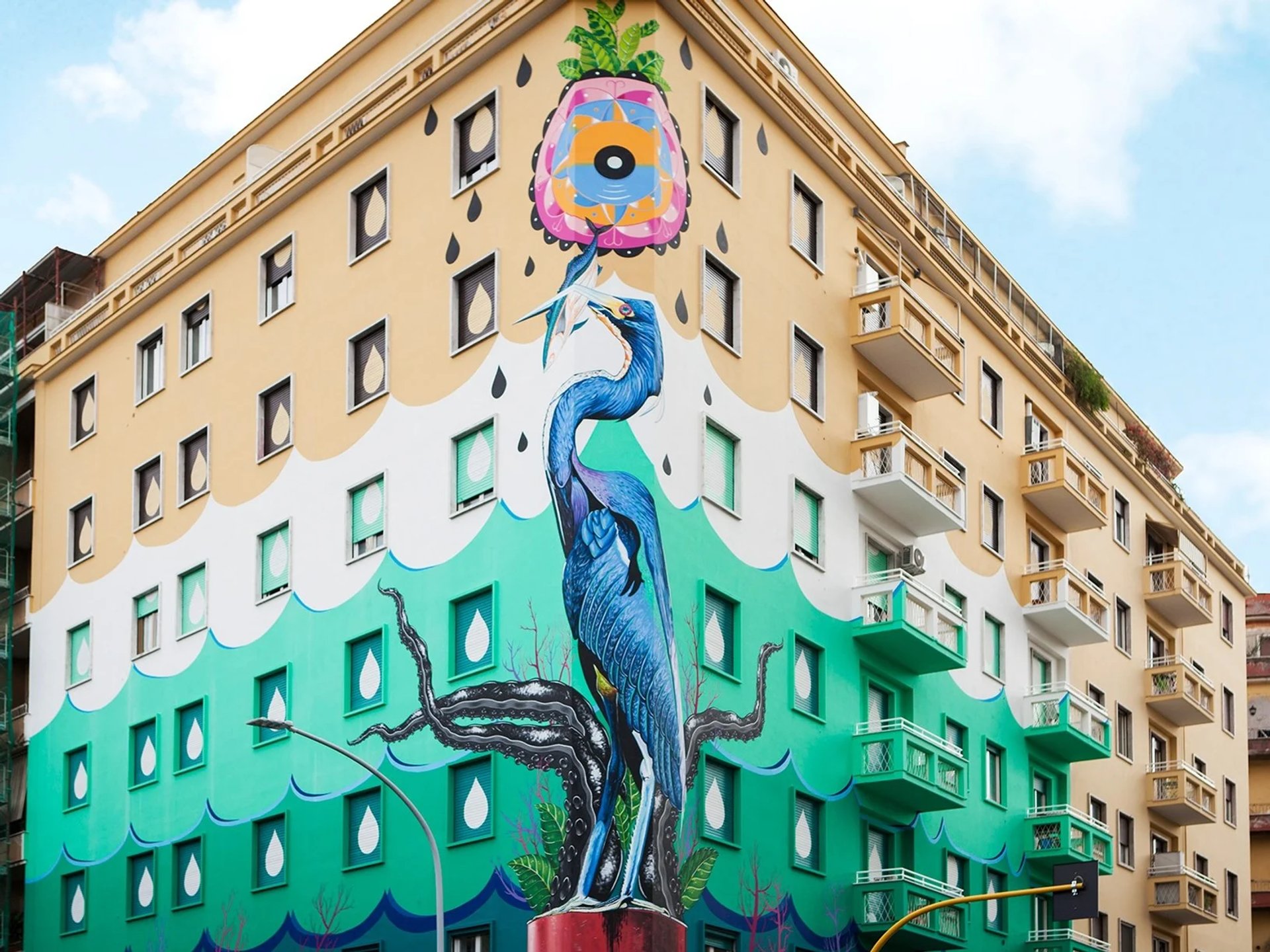
Iena Cruz's Hunting Pollution (2018)
In the post-industrial Ostiense district, enormous murals plaster the walls of abandoned factories and warehouses. One of the most innovative of these is street artist Iena Cruz's Hunting Pollution. Depicting a stork with a flower in its beak, it is the largest mural in Europe to be painted with Airlite, a special paint designed to purify the air, and reportedly sucks out as much CO2 from the surrounding environment as would 30 trees. Also visit the Centrale Montemartini, an ex-power station that has been transformed into a museum filled with ancient sculptures.
Bernini’s Apollo and Daphne, Galleria Borghese
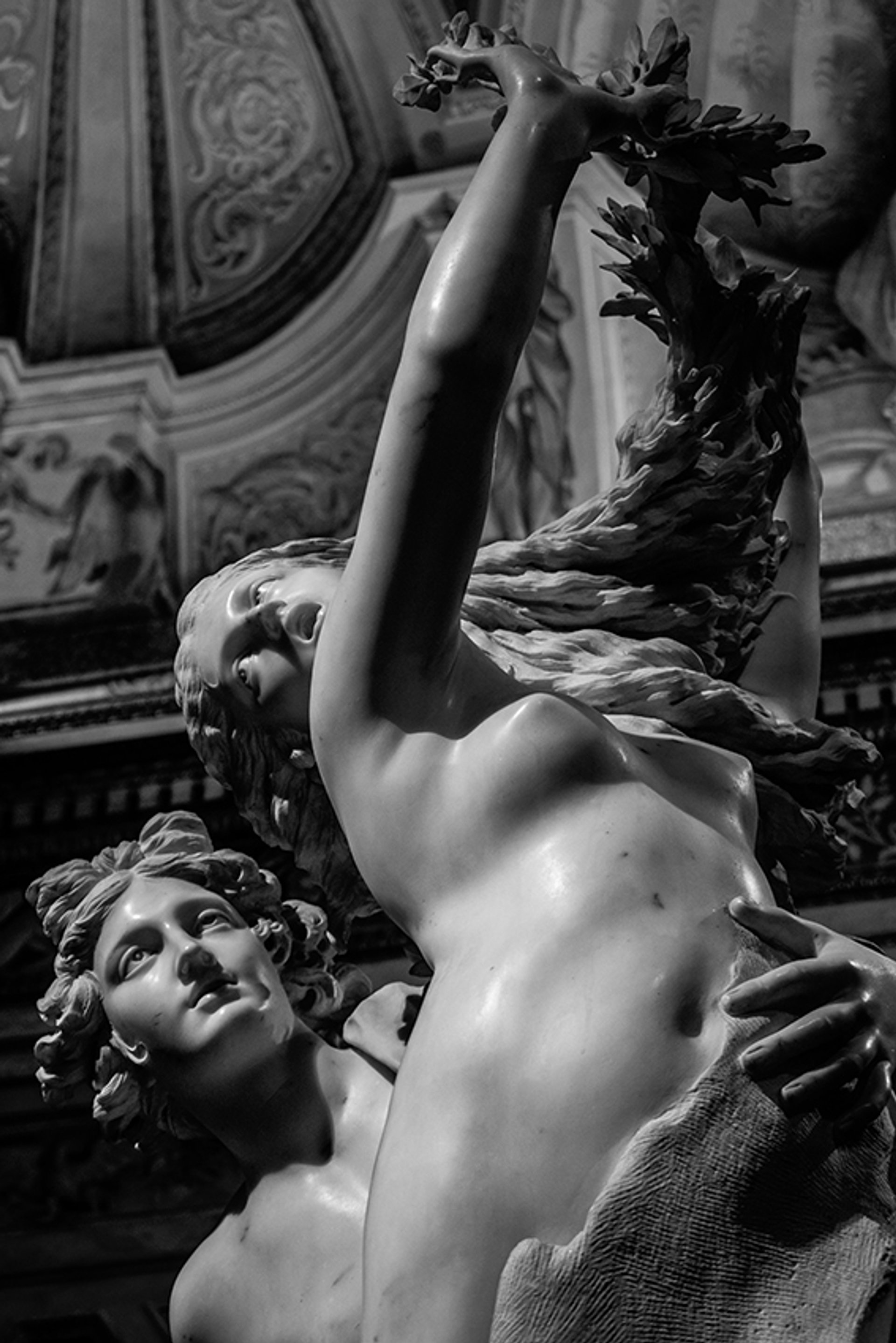
Detail of Bernini’s Apollo and Daphne (1625) © Mateus Campos Felipe
No other sculpture expresses such a powerful sense of dynamism, sexual appetite and terror. Apollo's torso strains as he doggedly hunts Daphne. The fleeing nymph's hands sprout laurel as she begins her metamorphosis into a tree in a desperate attempt to evade her pursuer. Commissioned by the notoriously indulgent Cardinal Scipione Caffarelli-Borghese, the work is displayed at the Galleria Borghese alongside works by Canova, Caravaggio, Raphael, Perugino, Antonello da Messina, Carracci, Rubens, Bellini and Titian. The Gallery is surrounded by a 80-hectare park that includes other cultural hotspots such as the National Gallery of Modern Art and Etruscan Museum.


